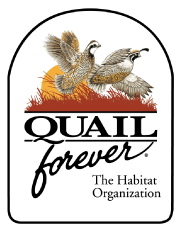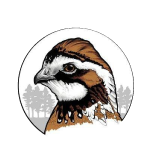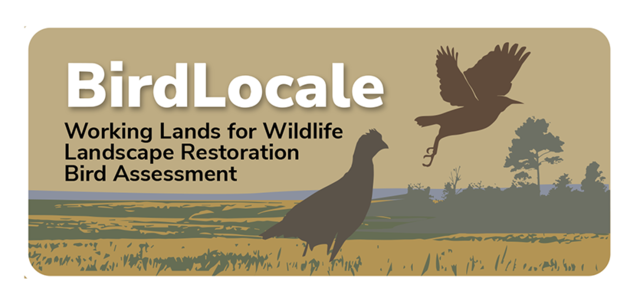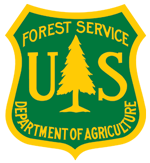News
News articles and events on WLFW, Landscapes and Wildlife sites.
New Plan Guides Conservation Action On America’s Central And Eastern Grasslands And Savannas
New Plan Guides Conservation Action on America’s Central and Eastern Grasslands and Savannas
How a hurricane fueled wildfires in the Florida Panhandle
The wildfires that broke out in the Florida Panhandle in early March 2022 were the nightmare fire managers had feared since the day Hurricane Michael flattened millions of trees there in 2018. It might sound odd – hurricanes helping to fuel wildfires. But Michael’s 160 mph winds left tangles of dead trees that were ready to burn.
American Fisheries Society Newsletter January 2022
AFS News: Spokane Symposium Proposal Deadline, Brook Trout Population Genetics, Recovering America's Wildlife Act Hearing
Webinar: Native Warm-Season Grass Forages and Grazing Management for Bobwhites
Join us for a two-day webinar discussing native warm-season grass forages in the eastern U.S. and integrating grazing management for Northern Bobwhites.
NRCS in Florida Announces Agricultural Conservation Easement Program Signup
The USDA Natural Resources Conservation Service (NRCS) in Florida has announced they are accepting applications from agricultural producers and forest landowners for the Agricultural Conservation Easement Program (ACEP). While NRCS does accept ACEP applications year-round, producers and landowners should apply by December 31, 2021 to be considered for funding in the current cycle.
Sometimes, the simplest things can help wildlife
Sad to say, but that wide-open home on the range that Bing Crosby sings about in Brewster Higley’s “Home on the Range” has been steadily diminishing with every passing decade as the Western landscape has been sliced and diced by roads and barbed-wire fences.
Flagler County Land Management assists Central Florida Prescribed Fire Council instructing wildland fire training class in Apopka
Twenty-one students from nine different organizations across the state of Florida participated in the training.
Bog Turtle (Glyptemys muhlenbergii)
Learn about The Nature Conservancy's work to save North America's smallest turtle.
Tip for Raising EQIP Payment Rate for Prescribed Burns
Potential approaches to raising payment rates for prescribed burns.
Northern bobwhite, Grasslands and Savannas National Partnership Meeting, Feb 23rd-24th 2021 Webinar Presentation
Presentations from the 2021 WLFW Northern Bobwhite, Grasslands and Savannas Partnership Meeting
Does Cattle Grazing Reduce Fire Fuels and Fire Danger?
The last few fire seasons have clearly demonstrated that fires are coming more frequently and at sizes that challenge our ability to fight and/or control them. While grazing has been considered and even sometimes used as a fire prevention tool, the actual success and impact have not been clearly documented. This research is another step in learning how to successfully use grazing to reduce fire danger. We’ll be sharing more on this topic in future issues. January 11, 2021
American Fisheries Society Newsletter March 2022
Spokane Abstract Submission, Conservation in Infrastructure Bill, Perspectives on Drones
USDA Announces Additional Assistance for Cattle, Row Crop Producers
USDA announced today more than $12 billion for the Pandemic Assistance for Producers, which will help farmers and ranchers who previously did not qualify for COVID-19 aid and expand assistance to farmers who have already received help. Farmers who previously submitted CFAP applications will not have to apply again. Sign-up for the new program begins on April 5.
Paul Hessburg: Why Wildfires Have Gotten Worse-and What We Can Do About It
Megafires, individual fires that burn more than 100,000 acres, are on the rise in the western United States -- the direct result of unintentional yet massive changes we've brought to the forests through a century of misguided management. What steps can we take to avoid further destruction? Forest ecologist Paul Hessburg confronts some tough truths about wildfires and details how we can help restore the natural balance of the landscape.
SE FireMap
An improved system for mapping fires across the U.S.
Prescribed Fire Effects on Water Quality in the Southern Appalachians April 22nd, 12:00-1:00 EST
Kipling Klimas (Utah State University) will discuss his work assessing the impact of prescribed fire on high value forested watersheds in the southern Blue Ridge Mountains.
Upcoming Webinar: Introduction to the Southeast FireMap
A free webinar for practitioners and the public to learn about the Southeast FireMap with representatives from USDA-NRCS, Tall Timbers Research Station, the Longleaf Alliance, the Southern Fire Exchange, and the University of Florida.
LANDFIRE office hour chats
A Natural Treasure: Florida's Sandhills & Grasslands
Learn how local and state partners with USDA’s Natural Resources Conservation Service have permanently protected a pristine sandhill grassland ecosystem in north-central Florida from rapidly advancing development.
Cal FIre Incidents
The California Department of Forestry and Fire Protection (CAL FIRE) responds to all types of emergencies. When the Department responds to a major CAL FIRE jurisdiction incident, the Department will post incident details to the web site. Major emergency incidents could include large, extended-day wildfires (10 acres or greater), floods, earthquakes, hazardous material spills, etc. This is a summary of all incidents, including those managed by CAL FIRE and other partner agencies.






















